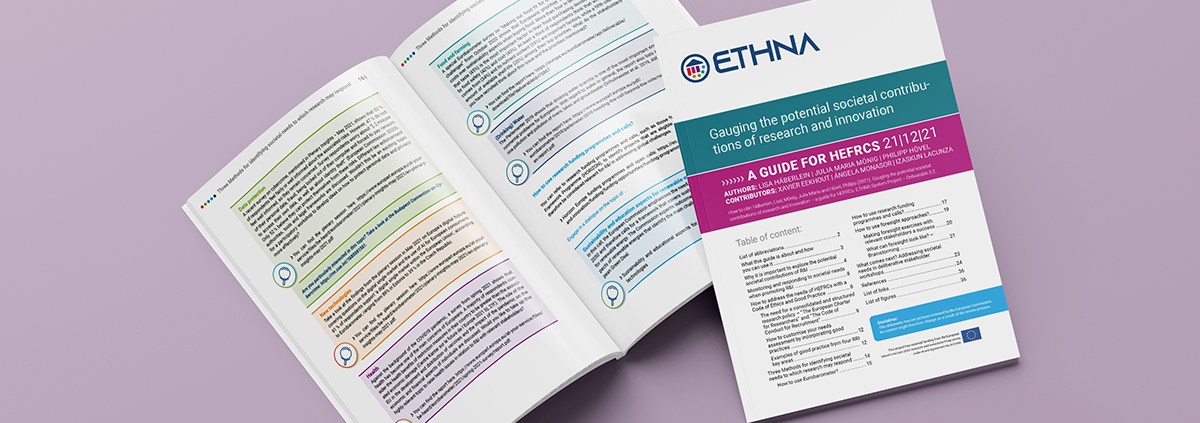How can R&I respond to societal needs?
One tenet of responsible research and innovation is the need to benefit society. A guide developed by ETHNA System details how higher education, funding and research centres can monitor and respond to societal needs.
According to the European Commission, RRI is “an ongoing process of aligning research and innovation with society’s values, needs and expectations”. When planning RRI activities, organisations thus need to ensure that they are responsive to society’s demands – and recognise the benefits of R&I that come with societal contributions, such as developing smart, inclusive, sustainable and new solutions to challenging issues and problems. To facilitate this process, ETHNA System has published “Gauging the potential societal contributions of research and innovation – a guide for HEFRCs”. It provides guidance on how organisations can identify societal needs and address them in RRI activities to meet today’s most pressing demands.
Methodological examples show how Eurobarometer, research funding programmes and calls, as well as foresight exercises can be used to do this. “By focusing on three methods for monitoring societal values, needs and expectations, readers are introduced to affordable secondary research activities and foresight exercises that they can use in the R&I process,” explains author Lisa Häberlein from the European Network of Research Ethics Committees (EUREC). Insight is also provided on how deliberative stakeholder workshops can address society’s most pressing needs together with affected actors to engage in a multi-perspective discourse.
This document is the third guide in a three-part series to help higher education, funding and research centres map stakeholders and scope their involvement (D3.1), monitor and respond to their needs (D3.2) and engage them in participatory events (D3.3.)
This deliverable has not yet been reviewed by the European Commission. Its content might therefore change as a result of the review process.




